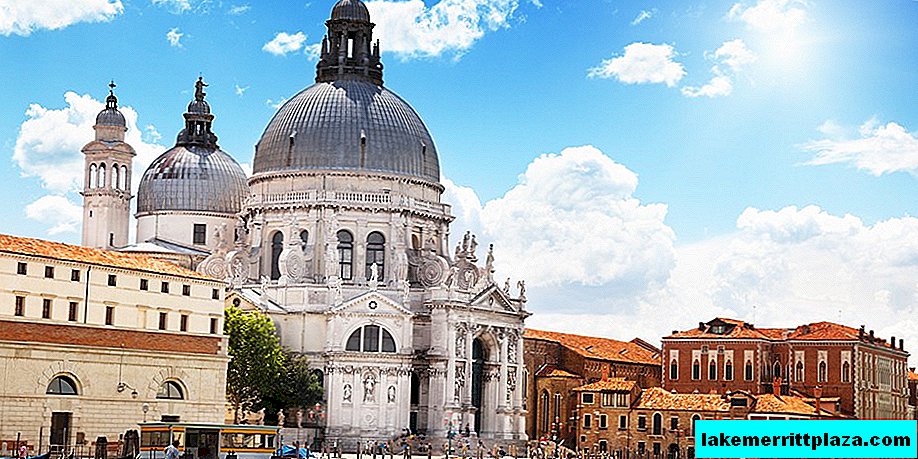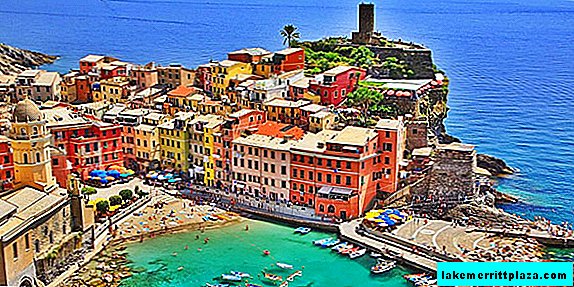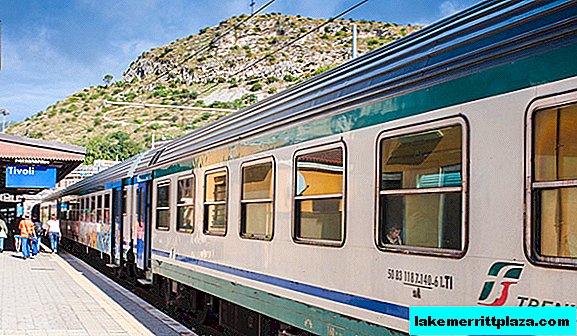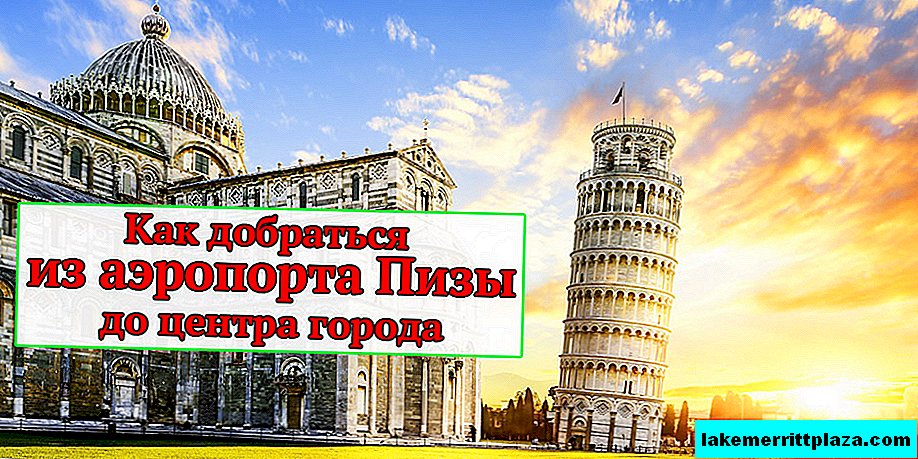Rafael Stanza (Stanze di Raffaello) - part of the vast museum complex in the Vatican. This is the name of the four relatively small (approximately 6x8 meters each) rooms located in the museum, painted by the great Renaissance artist Raffaello Santi and his students.
The word "stanza" in Italian means "room"; starting with Pope Julius II, who did not want to live in the same chambers as Alexander VI Borgia, whom he hated, personal papal apartments were located here.
Raphael’s frescoes decorating the walls and ceilings of the stanza amaze visitors to the Vatican museum complex not only with their craftsmanship, harmonious and vibrant colors, but also with the plot, elaborate details, the deepest meaning and symbolism. According to legend, the Pope himself was so delighted with the work of the young artist that he ordered the ready-made images made by other masters to be knocked off the walls and commissioned all the painting work exclusively to Raphael.
- We recommend reading about: the Renaissance in Italy
Stanza della Segnatura
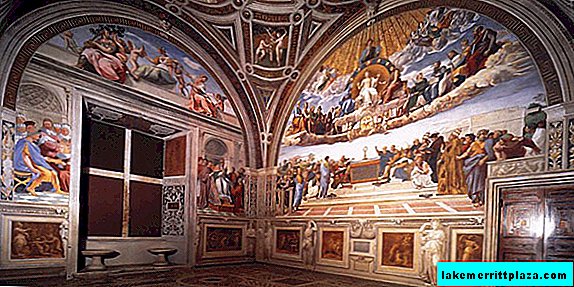
The first and most famous of the four stanza, designed by Raphael Santi in the Vatican, is called Stanza della Senyatura. When the artist began to paint her, he was barely 25 years old, but his youth did not prevent him from creating a true masterpiece.
Work on Della Senyatura lasted three years - from 1508 to 1511. The wall painting of the room is dedicated to a single topic - human activity in the field of spiritual achievements. The frescoes adorning the walls reflect the four aspects of such activities: philosophy (work "Athenian school"), theology ("Disputes", otherwise - "The Debate about Holy Communion"), justice (painting "Wisdom, moderation and strength"), poetry ( "Parnassus").
Only Stanza della Senyatura retained its original name, and was not renamed on the theme of the main frescoes. Literally, the name can be translated as "signature room" (from the Latin verb "signature" - sign, mark, stamp or sign). It was in this room that the Pope signed the papers sent to him.
"Athenian school"

Although all the frescoes adorning Rafael’s stanzas are worthy of the title of masterpieces, art critics and historians call them the work of Athens School (Scuola di Atene) in Stanza della Senyatura. It depicts a dispute between two Greek philosophers - Aristotle and Plato. The first of them points up with his raised hand, making it clear that the world of human ideas is higher than earthly life; the second, on the contrary, points to the earth, as if objecting to the interlocutor: the spiritual world is inextricably linked with the earthly world. Rafael also portrayed other famous philosophers: Diogenes, Pythagoras, Socrates, Heraclitus, Euclid, etc. It is interesting that some of them are endowed with the traits of the genius creators of the Renaissance: Plato is very similar to Leonardo da Vinci, Michelangelo is easy to recognize in Heraclitus, and Bramante in Euclid . Raphael portrayed himself in the form of one of two young men, talking with Zoroaster and Ptolemy. Such similarity, as conceived by the master, should indicate family ties, the community of ideas of ancient Greek philosophy and modern Raphael theology.
Stanza di Eliodoro

From 1511 to 1514, Rafael worked on the design of the premises, which later became known as Stanza d'Eliodoro. The theme of the murals in this stanza is the divine protection of the Church.

Stanza d'Eliodoro got its name from the main component of the pictorial composition of murals, created based on the plot of the legend of the Syrian warlord Eliodora, who was expelled by an angel horseman from the temple in Jerusalem.
The other two murals on the walls of Eliodoro are also devoted to biblical and historical events, in which divine forces clearly intervened. "Exile of the Apostle Peter from the Dungeon" - a fresco on the plot of the famous biblical tradition of how an angel freed the apostle imprisoned.

Many see here a hint at the life story of Pope Leo X: in 1512 he was captured by the French, but managed to escape.
The painting "Mass at Bolsena" is dedicated to the miracle that happened in 1263: the hostess - a tortilla intended for communion - suddenly began to bleed in the hands of an unbelieving clergyman.
Stanza dell'Incendio di Borgo

The name of the third stanza of Raphael and the last of those worked by the master himself - Incendio di Borgo - was received by her in honor of the fresco of the same name adorning one of the walls. The painting is dedicated to the fire that engulfed the Borgo quarter adjacent to the Papal Palace in the Vatican. According to legend, Pope Leo IV managed to stop the fire and save the parishioners, overshadowing the frightened crowd with the sign of the miraculous cross.

The general theme of Incendio di Borgo's murals is separate episodes from the history of papal acts. This is the last station from the Vatican, which Raphael painted himself. Work on it lasted from 1514 to 1517. In 1520, the great master died, and his students continued to work on the frescoes.
Stanza Constantine (Sala di Costantino)

Stanza Constantine is the last of four rooms called Raphael Stanza. The painting in it is dedicated to the struggle of the Roman emperor Constantine with the pagans. The plot begins with a fresco called "Vision of the Cross", which tells how Constantine before the battle with Maxentius at the Mulvian Bridge saw a radiant cross with the inscription "Sim conquer."

The composition continues with frescoes dedicated directly to the battle with the Gentiles at the Mulvian Bridge and the Christian rite of the baptism of the emperor, and ends with the painting "The Gift of Constantine", dedicated to the emperor’s letter, which, according to legend, granted the popes unlimited power over the west of the Roman Empire.
How to get to the Vatican Museum
To see Raphael’s stanzas, you need to visit the Vatican Museum. Entrance to it is carried out on a single ticket, allowing you to visit all the exhibitions of the museum complex. Ticket price - 16 euros, for pensioners and students - 8 euros. Buying a ticket online will cost 4 euros more - 20 and 12 euros, respectively.
An ideal option to enjoy the stanzas is to book an individual tour to museums with a licensed guide.
You can visit the Vatican Museum Complex every day except Sunday. From Monday to Friday, museums are open from 8:45 to 16:45, on Saturdays they work until 13:45. The museum should not be in excessively open clothing, beach shirts and shorts.
For current information on the work of the Vatican Museums, visit the official website www.museivaticani.va.


